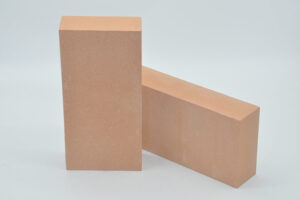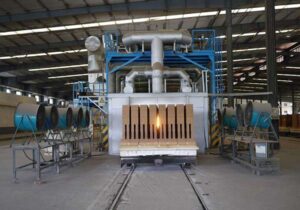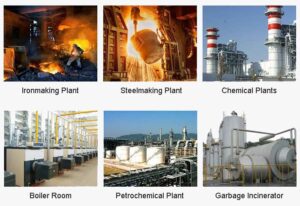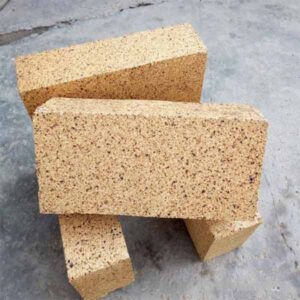Рефрактерные материалы, как правило, относятся к неорганическим неметаллическим материалам с огнеупорным не менее 1580 ° C. Однако, Определения варьируются во всем мире, например, Международный стандарт официально опубликован Международной организацией по стандартизации (Iso) предусматривает это “Рефрактерные материалы-это неметаллические материалы или продукты с огнеупорными трудами не менее 1500 ° C”.
Япония определяет это как “неорганические неметаллические материалы, которые трудно таять при высоких температурах”. Хотя определение рефрактерного материала отличается от страны к стране, Основная концепция такая же. То есть, Рефрактерные материалы используются в качестве структурных материалов для высокотемпературных печей, печи, и другое тепловое оборудование, а также материалы для промышленных высокотемпературных контейнеров и компонентов, и может противостоять соответствующим физическим и химическим изменениям и механическим эффектам.
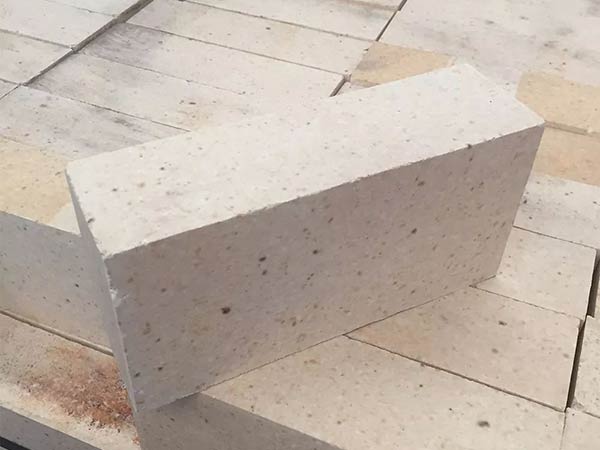
The high alumina bricks we are talking about mostly include the following types
1. Обычные высокоглиноземистые кирпичи
The main mineral composition of ordinary high alumina refractory brick is Yinglai stone, корунд, и стеклофаза, with the increase of Al2O3 content in the products, муллит, and corundum also increase, the glass phase will be reduced accordingly. And the refractories and high-temperature performance of the products are then improved. Ordinary high alumina brick has a series of more excellent refractory properties than clay bricks, is a good application effect, and is a widely used material in various hot work kilns. Compared with clay bricks, it can effectively improve the service life of the kiln.
2. High-Load Soft High Alumina Brick
High load soft high alumina brick compared with обычный высокоглиноземистый кирпич, what is different is the matrix part and the binding agent part: the matrix part, in addition to adding tri stone concentrate, according to the theoretical composition of chemical composition close to mullite after firing, reasonably introduced high alumina materials. Such as corundum powder, high alumina corundum powder, так далее. the binding agent selects high-quality ball clay, и т.п., depending on the variety of different clay composite binding agent, or mullite binding agent. Through the above method, the load softening temperature of high alumina brick can be increased by about 50~70℃.
3. Low Creep High Alumina Brick
The creep resistance of high alumina brick is improved by using the so-called unbalanced reaction. То есть, according to the use temperature of the kiln, add trinity minerals, activated alumina, так далее. to the matrix.
Make the composition of the matrix close to or completely mullite composition, because the palletization of the matrix will certainly improve the mullite content of the material and reduce the glass phase containing the RI, and the excellent mechanical and thermal properties of mullite are conducive to the improvement of the high-temperature performance of the material.
To make the matrix completely mullitized, controlling Al2O3/SiO2 is the key. Low creep high alumina bricks are widely used in hot blast furnaces, доменные печи, and other hot work kilns.
4. Фосфатно-связанный высокоглиноземистый кирпич
Phosphate-bonded high alumina brick is a chemically bonded refractory brick made of dense special or first-grade high alumina bauxite clinker as the main raw material, phosphate solution or aluminum phosphate solution as the binding agent, after semi-dry machine press molding, heat treatment at 400~600℃.
It belongs to the non-fired brick, to avoid product shrinkage in the process of use, the ingredients generally need to introduce the heating expansion of raw materials, such as blue pinite, кремнезем, так далее.
Compared with ceramic bonded fired high alumina brick, its peel resistance is better, but its load softening temperature is lower and its erosion resistance is poorer, so as long as a small amount of electrofused corundum, муллит, так далее. is added to strengthen the matrix.
Phosphate-bonded high alumina bricks are widely used in cement rotary kilns, своды электропечей, and other kiln parts.
5. Micro Expansion High Alumina Brick
This brick is mainly made of high alumina bauxite as the main material, with the addition of tri stone concentrate, by the high alumina brick production process. To make the high alumina brick expand moderately in the process of use, the key is to select the tritone concentrate and its particle size, control the firing temperature, make the selected tri stone minerals partly mullite, the residual part of the tritone minerals, residual tri stone minerals in the process of use further mullite (primary or secondary mullite), the volume of the accompanying expansion.
The choice of trilithic minerals to composite material is good. Since the decomposition temperature of trilithic minerals varies, the expansion from palletization also varies. Using this feature, high alumina brick has a corresponding expansion effect due to different working temperatures, squeezing brick joints, improving the overall compactness of the liner, thus improving the brick’s ability to resist slag penetration.
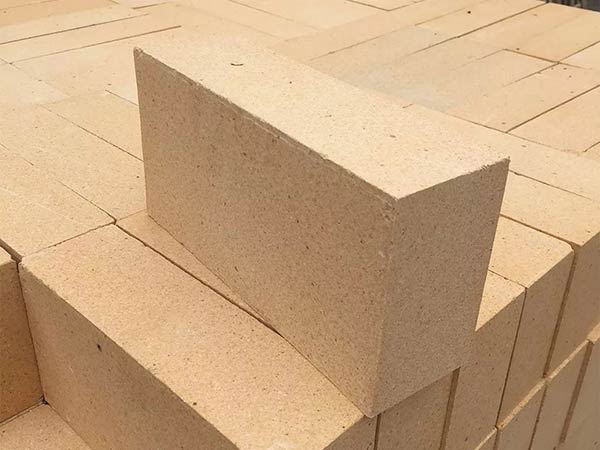
High Alumina Brick Has 5 Major Properties
Compared with clay brick, the outstanding advantage of high alumina brick is the refractoriness and load softening temperature is high, with the increase of Al2O3 content, the slag resistance performance is significantly improved. Specifically, high alumina bricks have the following properties.
1. Огнеупоры
The refractories of high alumina brick is higher than that of clay brick and semi-silica brick, reaching 1750~1790℃, which is a senior refractory material. Refractories is mainly affected by Al2O3 content and type and quantity, refractories increases with the increase of Al2O3 content.
2. Температура размягчения нагрузки
Because of the high Al2O3 in high alumina products, less miscellaneous mass, the formation of fusible glass body less, so the load softening temperature is higher than clay bricks. Однако, because the mullite crystallization has not formed a mesh organization, so the load softening temperature is still not as high as silica bricks.
3. Теплопроводность
High alumina brick has better thermal conductivity than clay brick. The reason is that the high alumina products in the very low thermal conductivity of the glass phase are less, and the number of mullite and corundum crystals with better thermal conductivity increases, which improves the thermal conductivity of the products.
4. Устойчивость к тепловому удару
The thermal shock resistance of high alumina brick is between clay products and silica products. 850 ℃ water cooling cycle is only 3 ~ 5 раз. This is mainly because the thermal expansion of corundum is higher than mullite, and no crystalline transformation of the reason.
В настоящий момент, we can improve the particle structure of the product, reduce the content of fine powder and improve the critical size of clinker and particle gradation, to improve the thermal shock stability of the product.
5. Slag Resistance
High alumina brick has more Al2O3, is close to the neutral refractory material, and can resist the erosion of acidic slag and alkaline slag because it contains SiO2, so the ability to resist alkaline slag is weaker than the ability to resist acidic slag.
Кроме того, the slag resistance of high alumina products is also related to the stability of the products in the slag. Вообще говоря, after high-pressure molding and high-temperature firing, products with lower porosity have higher slag resistance.

